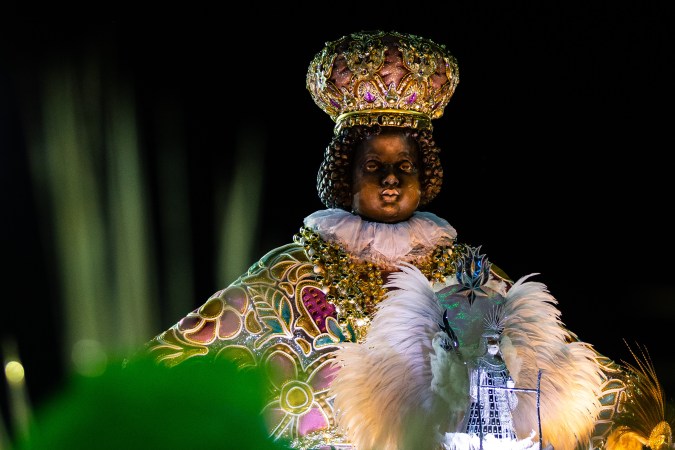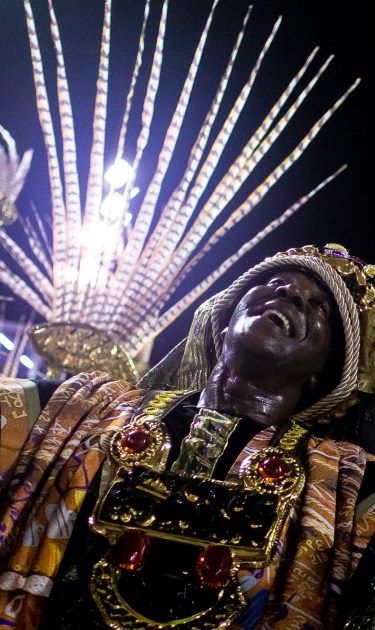Carnival in Brazil is one of the most important festivals of the year, as well as the best-known Brazilian celebrations in the world, attracting millions of people to the streets of several cities throughout the country. But not every part of Brazil celebrates carnival the same way, in fact each region has its own particular music, dance and parties.
In Brazil, several cultures (or cultural traits) coexist and are collectively understood as “brazilianness,” yet they can be—and often are—very different from one another. From Rio de Janeiro’s samba, frevo in Recife and Olinda to Bumba Meu Boi in São Luis, Brazil has a lot to offer in terms of carnival. Each different city with its peculiarities, attractions, traditional food and history.
In Rio de Janeiro, Samba is the main attraction. Traditionally millions of people take to the streets all over the city in blocos, or groups of people following musicians playing and singing old and modern sambas—and even popular rock songs from The Beatles to the rhythm of samba. Last year, 7 million people celebrated carnival in the city.
Recently, São Paulo has also been having great street celebrations, but without the charm and tradition of the neighboring Rio de Janeiro.


Since the 19th century, blocoshave been parading in Rio, yet the festivity in itself is much older, dating back to the 17th century, with religious celebrations and later on, masquerades with waltz and polka. From the 1910’s samba has become the focus of the festivities, even though routinely criminalized. By the end of the 1920’s the first samba schools were founded (parading competitively from 1932), among them Estação Primeira de Mangueira and Portela, two of the most beloved institutions of Rio de Janeiro, who are still active and vying for titles.
It is remarkable that a musical style once heavily persecuted by authorities managed to become one of the most visible symbols of Brazil—the result of the struggle of countless sambistas and supporters who were not ready to give up on their culture and way of life and to sing about their history, reality and dreams for the future. Today, Rio’s carnival generates almost a billion dollars for the city’s economy alone, being more than a party, but also an important—if not fundamental—income source for its people.
If dancing (or trying to) crammed in the middle of the crowd is not your thing (in 2012, for example, the bloco Cordão do Bola Preta gathered 2.3 million people in the city center, there is the famous parade of the escolas de samba (samba schools) at Marquês de Sapucaí (Sambódromo) where 13 schools fight for the title of champion and, even more, for their samba to remain in popular memory and be sung in future festivities.

The parade took place on February 23 and 24 this year.

Over 2 thousand kilometres northeast lies Recife, known as the Brazilian Venice, the capital of the state of Pernambuco. The city has a rich history, such as being the first city to have a synagogue in Brazil and a period of Dutch colonization which has left its mark to date, and important cultural movements. It was in Recife that Chico Science revolutionized Brazilian rock with Manguebeat, where Maracatu is heard on every corner, and where another of the world’s greatest carnivals is celebrated to the sound of frevo.
For the lovers of crowds, a visit to Recife, and especially nearby Olinda, with several hills and narrow cobbled streets surrounded by small colorful houses, is a must. It is in Recife that the largest carnival block in the world, the Galo da Madrugada (Dawn Rooster), which has already attracted 2.5 million people (from 2015 to 2018), parades. Last year, Olinda, with a population of just over 370 thousand people, attracted an extraordinary 3.4 million people to its streets.

Included on UNESCO’s list of intangible heritage, frevo gained its name in 1907, adopting an accelerated and acrobatic dance whose origin is capoeira, a traditional Afro-Brazilian martial art. With colorful clothes and always with a parasol, the frevo dancers, or passistas, go up and down the hillsides of Olinda throughout the carnival. Next to them, frevo bands play for hours while millions of people compete for some space in a party that culminates in a parade of giant puppets through the city streets.
Far north, in São Luis, the capital of the state of Maranhão, another unique culture can be found—and also another musical style that attracts crowds from neighbouring states.

Without the same fame and buzz (national and international) as frevo and samba, but with great regional importance, the festival of Bumba Meu Boi—which became the Intangible cultural heritage of humanity last year—mixes black, indigenous and European styles and traditions. For those who enjoy a good party, but who don’t like being in the middle of giant crowds, Bumba Meu Boi is an excellent option—and it’s worth taking the chance to get to know São Luis and its famous Portuguese tiles, its typical mix of northeastern and northern Brazilian food and a culture with strong indigenous and black roots.

Bumba meu boi is a celebration whose origin dates back to the 17th century and which was born as social criticism, a theatre that combines various elements of comedy and satire. It tells the story of a rich farmer who owned an ox of great beauty and who, moreover, knew how to dance.
In the story, a farm worker, whose pregnant wife wanted to eat the tongue of the ox, a delicacy much appreciated in the north and northeast of Brazil, steals it and kills it.
When the farmer sends the employees to go after the ox and discovers that it is dead, he calls apajé (indigenous healer) who resuscitates the ox. The party then became the celebration of the bull’s new life—which is also spread throughout the states of Pará and Amazonas. There are different versions of the story, in one of them a slave couple faces the fury of the slave owner after killing one of his oxen, giving a tone of resistance to slavery to the plot of the show.

From a pagan feast to an important date in the Catholic calendar, carnival became an unholy celebration. Often resistance, other times a purely hedonistic celebration, carnival is not just any date in the Brazilian calendar, but a moment of unique joy, of breaking rules, of freedom and celebration of life—and also of death.
For a week (or in some cases much longer, since before carnival blocosand escolasrehearse and make presentations) entire populations forget their problems and join the party. it is a typically Brazilian way of leading life, seeking joy and happiness in the midst of chaos—in a country with high rates of violence and social inequality. Some would say that this is similar to panis et circencis, others that it is the only possible way to cope with a crushing reality.
Recife, Olinda and São Luís suffer from high rates of violence, as well as inequality. The North-Northeast of Brazil as a whole has some of the worst socioeconomic indicators in the country.
In Rio de Janeiro, in addition to these problems, the city faces contamination of drinking water and a government led by an evangelical fundamentalist who has an aversion to carnival and refuses to invest in samba schools and has made severe cuts in the funds set aside for the party as a whole—despite the guarantee of generating ample income. Along with it, there’s an open dispute between the state, drug traffickers and armed militias for control of neighborhoods and poor communities of the city.
But none of that stops the party from happening.




